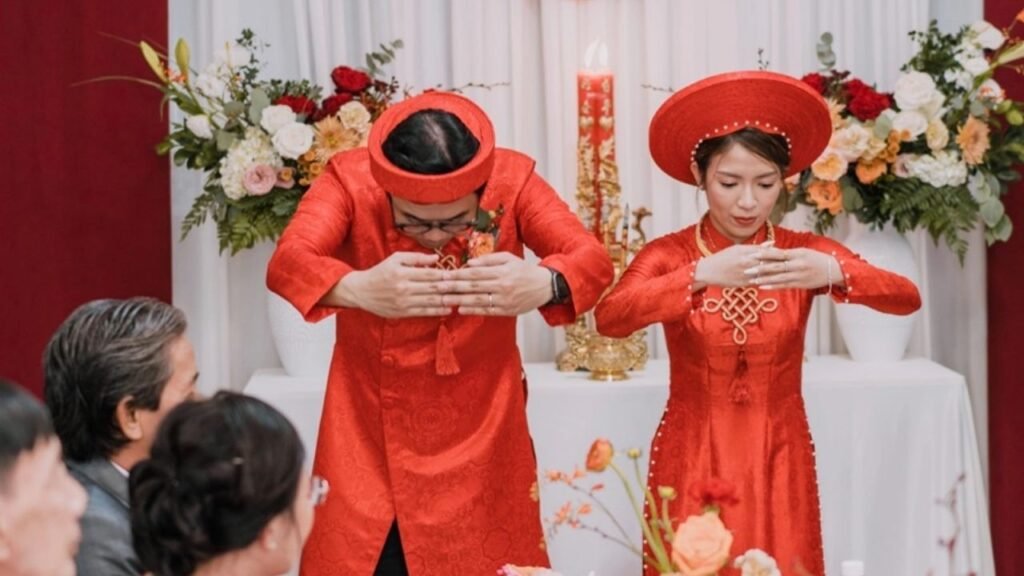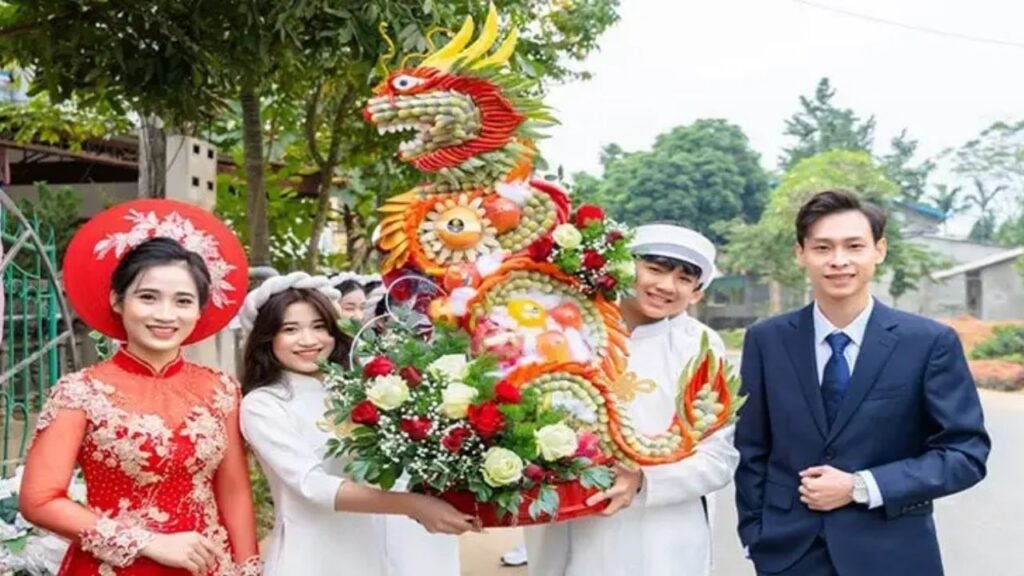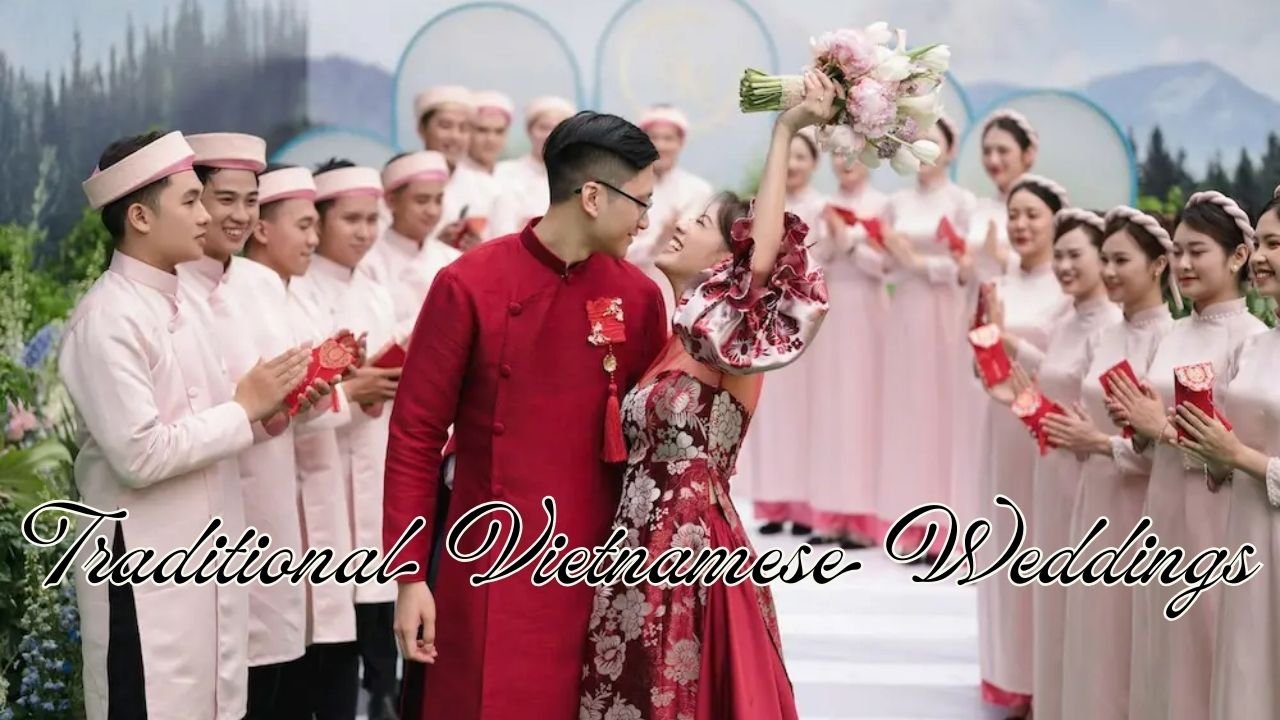Vietnamese weddings are rich in history, lifestyle, and symbolism, reflecting the country’s deep-rooted traditions and own family values. Unlike Western weddings, which often emphasize the rite and reception, Vietnamese weddings are multi-step celebrations full of rituals that honor ancestors, circle of relatives, and community. From engagement ceremonies to the wedding day itself, each custom carries a enormous cultural meaning.
1. Understanding Vietnamese Wedding Culture
Vietnamese wedding ceremony traditions reflect the deeply held values of circle of relatives honor, admire for elders, and spiritual connection to ancestors. Unlike Western weddings that attention basically on the couple, Vietnamese ceremonies emphasize the union of households and groups.
Core Cultural Principles
In Vietnamese subculture, marriage is viewed as a becoming a member of of two households as opposed to just two individuals. Parents and prolonged own family individuals play lively roles in planning, rite participation, and blessing the union.
Every traditional Vietnamese wedding includes ancestor worship ceremonies where the couple seeks advantages from their deceased family members, believing their spirits retain to manual and protect the residing. Every component of a Vietnamese wedding ceremony carries which means, from the colors worn to the gifts exchanged, developing a wealthy tapestry of cultural importance.
Historical Context
Traditional Vietnamese wedding ceremony customs advanced during the Nguyen Dynasty (1744-1945), while complex ao tac (ancient formal áo dài with lengthy sleeves) have become the same old wedding ceremony attire. These customs had been motivated by means of Chinese traditions whilst keeping surprisingly Vietnamese traits, developing a unique cultural blend that persists today.
2. The Six Traditional Ceremonies

Traditional Vietnamese weddings encompass six awesome ceremonies, each with unique purposes and rituals. While present day couples frequently combine or regulate those ceremonies, knowledge their original shape presents insight into Vietnamese cultural values.
- Le Dam Ngo (Proposal Ceremony)
- The concept rite marks the formal beginning of the wedding system. The groom’s own family visits the bride’s domestic to formally explicit their intention for marriage and talk the union with her family.
- Le An Hoi (Engagement Ceremony)
- Also referred to as the betrothal ceremony, that is one of the maximum essential pre-wedding ceremony events. The groom’s family formally asks for the bride’s hand in marriage and offers traditional gifts.
- Le Dinh Hon (Official Engagement)
- This ceremony formally proclaims the couple’s betrothal to the community. Jewelry is exchanged, and the couple is formally considered engaged.
- Le Thanh Hon (Wedding Ceremony)
- The major marriage ceremony generally takes region on the groom’s domestic and includes the maximum widespread rituals of ancestor worship and own family blessing.
- Le Cuoi (Wedding Reception)
- The celebratory ceremonial dinner brings collectively each families and the community to celebrate the new union with meals, music, and traditional enjoyment.
- Le Ve Nha (Post-Wedding Return Ceremony)
- A few days after the wedding, the couple visits the bride’s circle of relatives home to specific gratitude and hold family connections. This rite emphasizes that at the same time as the bride has joined her husband’s circle of relatives, she keeps everlasting bonds with her beginning own family.
3. Vietnamese Wedding Attire and Symbolism
The Ao Dai: Traditional Wedding Dress
The áo dài is the most iconic element of Vietnamese wedding apparel, representing beauty, cultural pride, and subculture. This equipped silk garment features floor-length panels worn over pants, creating a sleek silhouette that embodies Vietnamese femininity.
Bridal Ao Dai Features:
- Color: Traditionally crimson for good fortune and happiness
- Design: Intricate embroidery with gold or silver threads
- Materials: High-high-quality silk or brocade
- Accessories: Matching pants, frequently in contrasting shades
- Embellishments: Beading, sequins, and traditional motifs
Groom’s Attire:
- Color: Traditionally blue for peace, calmness, and wish
- Style: More understated layout in comparison to bride’s apparel
- Modern Options: Some grooms select Western tuxedos for positive ceremonies
Khan Van – Traditional Headpiece
Both bride and groom traditionally wear the khan van, a tiered headpiece comparable to an open-pinnacle turban crafted from layers of cloth.
Design Characteristics:
- Bride’s Version: Elaborate and large, often matching or contrasting the ao dai
- Groom’s Version: Simpler and smaller than the bride’s
- Materials: Silk or brocade with decorative factors
- Modern Adaptations: Some couples use clean vegetation instead of conventional material
Color Significance in Vietnamese Weddings
- Red: The dominant coloration representing happiness, appropriate fortune, and prosperity. Used notably in decorations, garb, and present wrapping.
- Gold: Symbolizes wealth, prosperity, and divine blessings. Often included in embroidery and jewellery.
- Pink: Popular for bridesmaids’ apparel, representing femininity and style.
- Blue: Traditional shade for grooms, representing tranquility and desire.
4. Traditional Wedding Gifts and Their Meanings

In Vietnamese wedding culture, gift-giving transcends easy generosity to grow to be a sophisticated language of advantages, social reputation, and religious wishes. Each object provided includes centuries of symbolic which means, carefully chosen to convey precise hopes for the couple’s destiny prosperity, fertility, and happiness.
Gifts from Groom’s Family to Bride’s Family
- Betel Leaves and Areca Nuts (Trau cau): Symbolizes love and devotion – the inseparable bond between husband and wife. This is an critical detail in all Vietnamese ceremonies
- Sticky Rice (Xoi): It represents harmony and togetherness, frequently organized in more than one shades for visual attraction. It symbolizes abundance and prosperity
- Traditional Cakes (Banh): Usually square-fashioned representing earth and stability, made with glutinous rice and mung beans
- Tea and Wine: While tea represents purity and appreciate, wine symbolizes party and pleasure
- Fruits: Always supplied in even numbers (besides for positive special fruits). Common choices consist of bananas, oranges, and pomelos
Gifts from Wedding Guests
- Red Envelopes (Li xi) continue to be the most liked and practical gift from wedding ceremony visitors. These fortunate pink packets include cash in even denominations, with the amount reflecting the closeness of the relationship and the guest’s way.
- Gold Jewelry comes from near circle of relatives contributors and relatives who want to offer lasting protection for the brand new couple. These treasured gifts – usually necklaces, bracelets, or jewelry – represent enduring cost that could assist the family through difficult instances even as preserving connections to Vietnamese traditions of wealth protection.
- Practical Household Items assist the couple set up their new home together. Kitchen device, satisfactory linens, and modern-day home equipment display the community’s investment in the couple’s daily life and comfort, making sure they have got the entirety needed to construct a prosperous household.
Conclusion
Traditional Vietnamese weddings are a beautiful blend of culture, own family, and symbolism. From engagement ceremonies to the tea rituals on the marriage day, each custom displays respect for ancestors, deep family values, and the wish for prosperity and happiness in married existence. While modern influences have fashioned present day celebrations, the cultural significance of these rituals remains intact, ensuring that Vietnamese weddings are not handiest joyous but also deeply meaningful.
